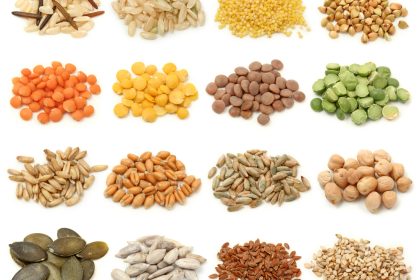That mental clarity you’ve been searching for might be directly connected to what’s on your fork.
That mid-afternoon mental slowdown, the inability to concentrate, or feeling like your thoughts are wading through molasses — brain fog affects millions of Americans daily, often without them recognizing food as the primary trigger. This cognitive cloudiness isn’t just an inconvenience; it can significantly impact productivity, emotional wellbeing, and quality of life.
While stress, poor sleep, and certain health conditions contribute to brain fog, dietary choices play a remarkably powerful role in cognitive function. The modern Western diet contains numerous ingredients that can disrupt optimal brain performance, creating the perfect storm for mental haziness. Understanding these connections offers a pathway to clearer thinking without medication.
The blood sugar rollercoaster effect
Perhaps the most immediate and dramatic food-related trigger for brain fog comes from blood sugar fluctuations. The brain consumes approximately 20% of the body’s energy despite accounting for only 2% of total body weight, making it exceptionally sensitive to glucose availability.
When you consume refined carbohydrates like white bread, pastries, sugary cereals, or sweetened beverages, blood glucose rises rapidly. This initial surge can provide a brief mental boost but quickly triggers an insulin response that often overcorrects, leading to a subsequent blood sugar crash. This crash manifests as difficulty concentrating, mental fatigue, irritability, and reduced cognitive processing speed.
The consistency of blood sugar matters tremendously for brain function. Research using continuous glucose monitors shows that individuals experiencing frequent blood sugar spikes and dips throughout the day report more brain fog symptoms regardless of whether they have diagnosed diabetes or prediabetes.
Foods particularly problematic for creating these cognitive-disrupting blood sugar swings include:
White bread and refined grain products that rapidly convert to glucose Sweetened breakfast cereals that combine refined grains with added sugars Candy and sweet snacks that deliver glucose without fiber to slow absorption Sweetened coffee drinks that can contain more sugar than desserts Fruit juices that provide fruit sugars without the fiber present in whole fruits
The brain clarity alternative focuses on stable blood sugar through complex carbohydrates paired with protein, healthy fats, and fiber. These combinations release glucose gradually, providing consistent brain energy without the dramatic peaks and valleys:
Steel-cut oatmeal with nuts and cinnamon Whole grain toast with avocado and eggs Greek yogurt with berries and ground flaxseed Lentil soup with olive oil and vegetables Sweet potatoes with skin and a source of healthy protein
The inflammatory pathway to clouded thinking
Chronic low-grade inflammation increasingly appears central to many cognitive issues, including brain fog. Certain foods directly promote inflammatory responses that affect the central nervous system, including the brain.
Inflammatory foods trigger the release of pro-inflammatory cytokines, which can cross the blood-brain barrier and disrupt neural function. This neuroinflammation affects neurotransmitter activity, reduces brain-derived neurotrophic factor (BDNF) levels, and impairs communication between brain regions.
Foods that commonly trigger inflammatory responses include:
Ultra-processed foods containing industrial seed oils, artificial ingredients, and preservatives Foods with artificial trans fats still found in some packaged products Processed meats containing nitrates, nitrites, and advanced glycation end products Fried foods that combine damaged fats with acrylamide and other harmful compounds formed during high-heat cooking Foods with artificial additives like certain food dyes and preservatives linked to inflammatory responses
The cognitive clarity alternative emphasizes an anti-inflammatory approach to eating:
Fatty fish rich in omega-3 fatty acids that actively reduce neuroinflammation Colorful vegetables and fruits containing polyphenols that modulate inflammatory pathways Turmeric, ginger, and other spices with established anti-inflammatory properties Extra virgin olive oil containing oleocanthal, a natural anti-inflammatory compound Nuts and seeds that provide antioxidants and healthy fats that support brain cell membrane health
The gut-brain connection to mental clarity
The emerging science of the gut-brain axis reveals how intestinal health directly influences cognitive function. The gut microbiome communicates with the brain through various pathways, including the vagus nerve, neurotransmitter production, and immune system signaling.
Foods that disrupt gut microbial balance can trigger brain fog through several mechanisms:
They may reduce beneficial bacteria that produce short-chain fatty acids crucial for brain health They can increase intestinal permeability (“leaky gut”), allowing inflammatory compounds to enter circulation They might alter the gut’s production of neurotransmitters like serotonin, which influences cognition
Foods particularly disruptive to gut-brain harmony include:
Artificial sweeteners that alter gut microbial composition Emulsifiers found in many processed foods that can damage the intestinal mucous layer Alcohol that directly irritates the gut lining and kills beneficial bacteria Chlorinated tap water that may affect gut microbial populations Foods containing antibiotics residues that disrupt microbial balance
The mental clarity alternative focuses on gut-supporting options:
Fermented foods like kimchi, sauerkraut, and yogurt that provide probiotics Prebiotic-rich foods like garlic, onions, leeks, and asparagus that feed beneficial bacteria Diverse plant foods that increase microbial diversity associated with better cognitive function Polyphenol-rich foods like berries, dark chocolate, and green tea that support beneficial gut bacteria Bone broth containing amino acids like glycine and glutamine that support gut lining integrity
The histamine response and cognitive function
Histamine intolerance represents an often-overlooked trigger for brain fog. While histamine is a normal neurotransmitter and immune signaling molecule, excessive levels can trigger systemic symptoms including cognitive disturbances.
Certain foods either contain high levels of histamine or trigger histamine release in the body. For sensitive individuals, these foods can rapidly induce brain fog, alongside other symptoms like headaches, nasal congestion, or skin flushing.
Common histamine-related brain fog triggers include:
Fermented alcoholic beverages, particularly red wine and champagne Aged cheeses that accumulate histamine during the aging process Cured and smoked meats with high histamine content Fermented foods like sauerkraut, kimchi, and kombucha Certain fish species, especially if not extremely fresh Histamine-releasing foods like citrus fruits, chocolate, and tomatoes for sensitive individuals
The cognitive clarity alternative for histamine-sensitive people focuses on:
Fresh meat and freshly caught fish prepared immediately Non-citrus fruits like apples, berries, and pears Fresh vegetables other than tomatoes, spinach, and eggplant Extra virgin olive oil and other pure cooking oils Gluten-free grains like rice and quinoa Herbal teas like rooibos and peppermint
The food sensitivity connection to mental haziness
Individual food sensitivities, distinct from classic allergies, represent another significant trigger for brain fog. Unlike allergies with immediate and obvious symptoms, food sensitivities can cause delayed reactions affecting cognition without clear physical signs.
These non-allergic food sensitivities trigger immune responses involving IgG antibodies rather than the IgE antibodies seen in true allergies. The resulting low-grade inflammation can affect brain function, often with a delay of hours to days after consumption, making the connection difficult to identify.
Foods commonly linked to sensitivity-related brain fog include:
Gluten-containing grains like wheat, barley, and rye Dairy products, particularly those containing A1 casein Eggs, especially the egg whites containing particular proteins Soy products found in many processed foods Corn and corn derivatives used extensively in food manufacturing Nightshade vegetables like tomatoes, peppers, and potatoes for susceptible individuals
The cognitive clarity alternative involves a personalized approach:
Identifying personal trigger foods through elimination diets or functional medicine testing Focusing on foods rarely associated with sensitivities like most fruits and vegetables Rotating foods regularly to prevent development of new sensitivities Using alternative grains like rice, quinoa, buckwheat, and millet Exploring plant-based or alternative animal protein sources well-tolerated individually
The blood flow factor in brain performance
Optimal brain function requires robust cerebral blood flow delivering oxygen and nutrients while removing waste products. Certain foods can either impair or enhance this critical circulation, directly affecting cognitive performance.
Foods that may reduce cerebral blood flow include:
Trans fats that increase inflammation in blood vessels and reduce nitric oxide production High-sodium processed foods that can increase blood pressure and reduce vascular function Excessive caffeine that may cause vasoconstriction in sensitive individuals Heavy meals high in saturated fat that temporarily reduce vascular reactivity Artificial food additives linked to endothelial dysfunction
The brain clarity alternative focuses on circulation-enhancing choices:
Nitrate-rich foods like beets, arugula, and spinach that boost nitric oxide production Flavonoid-rich foods like berries and dark chocolate that improve endothelial function Omega-3 fatty acids that reduce inflammation and support healthy blood flow Hydrating beverages that maintain proper blood viscosity Small, balanced meals that don’t divert excessive blood flow to digestion
The oxidative stress pathway to brain fog
The brain proves particularly vulnerable to oxidative damage due to its high oxygen consumption and abundant polyunsaturated fatty acids. Foods that increase oxidative stress can accelerate cellular damage, impair mitochondrial function, and reduce energy availability to brain cells.
Foods that increase oxidative burden include:
Deep-fried foods that contain oxidized lipids and acrylamide Processed vegetable oils containing oxidation-prone polyunsaturated fats Foods high in advanced glycation end products (AGEs) formed when proteins and sugars combine under high heat Alcohol that generates free radicals during metabolism Foods containing artificial preservatives that may induce oxidative stress
The mental clarity alternative emphasizes antioxidant-rich choices:
Deeply colored berries containing anthocyanins that protect neural tissue Cruciferous vegetables rich in sulforaphane that activates antioxidant pathways Green tea containing catechins that reduce free radical damage Cocoa flavanols that improve cerebral blood flow and reduce oxidation Herbs and spices with some of the highest antioxidant concentrations of any foods
The neurotransmitter effect of food choices
Brain neurotransmitters like dopamine, serotonin, and GABA regulate everything from mood to focus and cognitive processing. Food choices significantly influence neurotransmitter production and function, directly affecting mental clarity.
Foods that may disrupt optimal neurotransmitter balance include:
Artificial food dyes linked to altered dopamine metabolism MSG and related flavor enhancers that can affect glutamate signaling Aspartame that influences both dopamine and serotonin pathways Refined carbohydrates that cause serotonin spikes followed by drops Foods lacking essential micronutrients needed for neurotransmitter synthesis
The cognitive clarity alternative focuses on neurotransmitter-supporting options:
Protein-rich foods containing amino acids necessary for neurotransmitter production Leafy greens high in folate essential for dopamine and serotonin synthesis Fermented foods that support the gut microbiome’s production of neurotransmitters Omega-3 rich foods that maintain neural membrane fluidity for optimal receptor function Foods containing zinc, magnesium, and B vitamins critical for numerous neurotransmitter pathways
The insulin resistance factor in cognitive decline
Chronic high blood sugar and insulin levels eventually lead to insulin resistance, a condition where cells become less responsive to insulin’s signals. The brain, once thought to be insulin-independent, actually contains abundant insulin receptors critical for cognitive function and energy regulation.
Foods that promote insulin resistance and associated cognitive effects include:
High-fructose corn syrup that accelerates insulin resistance development Refined carbohydrates lacking fiber to moderate glucose absorption Sugar-sweetened beverages that deliver rapid glucose without satiety signals Processed foods combining sugars and unhealthy fats Excessive alcohol that interferes with insulin signaling
The brain clarity alternative emphasizes insulin sensitivity through:
Fiber-rich foods that improve glucose metabolism and insulin sensitivity Apple cider vinegar that may enhance insulin response when consumed with meals Cinnamon and other spices shown to improve insulin function Protein and healthy fats that provide satiety without blood sugar spikes Chromium and magnesium-rich foods that support insulin signaling pathways
Creating your personalized brain fog elimination plan
The most effective approach to combating food-related brain fog combines elimination of trigger foods with strategic addition of brain-supporting alternatives. This personalized nutrition strategy recognizes individual variation while applying universal principles of brain-supportive eating.
Step one involves identifying and removing the most likely cognitive disruptors:
Begin by eliminating ultra-processed foods, which often contain multiple brain fog triggers Reduce refined carbohydrates and added sugars to stabilize blood glucose Consider a two-week trial without common sensitivity triggers like gluten and dairy Minimize alcohol and caffeine to assess their impact on your mental clarity Read labels carefully for artificial additives, preservatives, and inflammatory oils
Step two focuses on adding brain-supporting foods systematically:
Increase omega-3 fatty acids through fatty fish, walnuts, flaxseeds, and chia seeds Add antioxidant-rich berries, colorful vegetables, and herbs to each meal Include high-quality protein sources at breakfast to support neurotransmitter production Incorporate fermented foods to support gut-brain connection Ensure adequate hydration with filtered water throughout the day
Step three involves creating sustainable eating patterns that support cognitive function:
Plan meals around protein, healthy fats, and fiber-rich carbohydrates Implement regular meal timing to support stable blood sugar Consider intermittent fasting approaches shown to enhance cognitive function Develop strategies for eating away from home without compromising brain health Listen to your body’s response to different foods and adjust accordingly
The relationship between food and cognitive function represents one of the most actionable aspects of brain health. By understanding how specific dietary components trigger brain fog and implementing targeted changes, many people experience dramatic improvements in mental clarity, focus, and cognitive stamina. This food-first approach often succeeds where other interventions have failed, highlighting nutrition’s fundamental role in optimal brain performance.
















